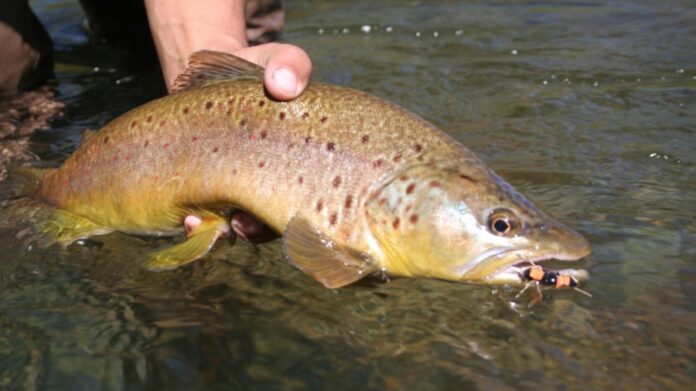Photo by Barrett Mattison
Patagonia is a surprisingly big place: with a total area of over 250,000 square miles, it’s larger than California and Oregon combined. And just like those states, Patagonia also boasts a huge variety of biomes and fisheries, each with its own unique character and appeal. So if you’re among the growing number of anglers considering taking a trip down there, you’ll want to ensure that your chosen destination is a good match for your expectations and aspirations, because there are a lot of different options.
The Argentine side, which makes up about 90% of Patagonia, can be conveniently broken down into 3 distinct zones: Northern, Central and Southern. This series will highlight the main features, benefits, and potential drawbacks of fishing in each zone so that readers can make more informed decisions about visiting this remote part of the world.

Photo by Evan Jones
The Central Zone
The central region begins just south of Bariloche at the continental divide–where rivers switch from draining into the Atlantic, as they do in the Northern zone, to draining into the Pacific via Chile–and extends more than 1,000 kilometers to the south, through the province of Chubut and well into Santa Cruz province below. The terrain changes dramatically along the way, going from lush temperate rainforest in the Río Manso basin at the northern end, down through the desert city center of Esquel, and southward onto a vast and desolate plain reminiscent of Wyoming or Nevada. Aquatic insects seem a bit less prevalent in the rivers of this region, but the abundant trout still have plenty of crustaceans, baitfish, and terrestrials to eat. This is the off-the-beaten path part of Patagonia that offers a nice balance between civilization and wilderness.

Photo by John Hohl
Both the waterways and the cities start to spread out and become more scarce the farther south you travel here. There are fewer roads, less pavement, fewer English-speakers, and fewer cars passing by in the event you need help. Another consideration is that the national parks in this region–including the famous Los Alerces NP, home of the rare Patagonian Cyprus tree–are clustered at the top end, so public access becomes less certain as you head down. You’ll need a sturdier vehicle here, and your trip will require more preparation than the quick jaunts in the northern region might, so while DIY fishing is still possible here, a guide can really help you cut down on wasted time and potential hazards.

Photo by Evan Jones
One of the best features of the central region is that it fishes well all year long due to the regulating influence of its glacial headwaters. This is a particularly nice feature during January and February, when some fisheries to the north can suffer from low flows and warm water. And because the central region has fewer parks and receives fewer tourists, you’re also more likely to find a quiet place to fish during the summer here. On the downside, that also means there are fewer amenities available here such as restaurants, shopping opportunities, bike or kayak rentals, etc., so fishing will likely fill more hours of your day.
Orvis-endorsed options in the Central region include Río Manso Lodge and Estancia Tecka Lodge. For more information on fishing in Argentina, CLICK HERE or call Orvis Travel’s Jeremy Kehrein at 1-800-547-4322.
Evan Jones is the assistant editor of the Orvis Fly Fishing blog. He spent two years living in Argentina and writing a popular guidebook on the region, and now makes his home on the Front Range of Colorado.
Credit: Source link































